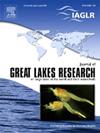Lake Superior: Current conditions, trends, and emerging threats – Foreword to the special section
IF 2.5
3区 环境科学与生态学
Q3 ENVIRONMENTAL SCIENCES
引用次数: 0
Abstract
Lake Superior is one of the five Laurentian Great Lakes and the largest lake in the world by surface area. Lake Superior and its surrounding watershed support a wide range of species, provide a wealth of ecosystem services, and support a robust economy, much of which is reliant on the health of the ecosystem. Though Lake Superior continues to lead the other Laurentian Great Lakes in condition and quality, it has also undergone significant changes including chemical pollution, invasive species, and harmful algal blooms (HABs). The lake is also sensitive to climate change, with rapidly warming water temperatures, significant nutrient input from extreme storm events, and changes to habitat and food web structure, among other impacts. Understanding the current conditions, trends, and emerging threats to Lake Superior from local to ecosystem scales allows us to better manage the lake now and prepare for the future. This Journal of Great Lakes Research special section features a wide range of research, capturing the status of Lake Superior and providing insight to current and future stressors. Further, this issue includes results from the 2021 Lake Superior Cooperative Science and Monitoring Initiative field season and other collaborative efforts to better understand and protect Lake Superior.
苏必利尔湖:现状、趋势和新出现的威胁-特别部分前言
苏必利尔湖是劳伦森五大湖之一,也是世界上表面积最大的湖泊。苏必利尔湖及其周围的流域支持着各种各样的物种,提供了丰富的生态系统服务,并支持着强劲的经济,而这在很大程度上依赖于生态系统的健康。尽管苏必利尔湖在条件和质量上仍然领先于其他劳伦森五大湖,但它也经历了重大变化,包括化学污染、入侵物种和有害藻华(HABs)。该湖对气候变化也很敏感,水温迅速变暖,极端风暴事件带来的大量营养物质输入,栖息地和食物网结构的变化,以及其他影响。了解苏必利尔湖从当地到生态系统规模的现状、趋势和新出现的威胁,使我们能够更好地管理湖泊,为未来做好准备。《五大湖研究杂志》的特别部分以广泛的研究为特色,捕捉了苏必利尔湖的现状,并为当前和未来的压力源提供了见解。此外,本期还包括2021年苏必利尔湖合作科学和监测倡议实地季节的结果,以及为更好地了解和保护苏必利尔湖而进行的其他合作努力。
本文章由计算机程序翻译,如有差异,请以英文原文为准。
求助全文
约1分钟内获得全文
求助全文
来源期刊

Journal of Great Lakes Research
生物-海洋与淡水生物学
CiteScore
5.10
自引率
13.60%
发文量
178
审稿时长
6 months
期刊介绍:
Published six times per year, the Journal of Great Lakes Research is multidisciplinary in its coverage, publishing manuscripts on a wide range of theoretical and applied topics in the natural science fields of biology, chemistry, physics, geology, as well as social sciences of the large lakes of the world and their watersheds. Large lakes generally are considered as those lakes which have a mean surface area of >500 km2 (see Herdendorf, C.E. 1982. Large lakes of the world. J. Great Lakes Res. 8:379-412, for examples), although smaller lakes may be considered, especially if they are very deep. We also welcome contributions on saline lakes and research on estuarine waters where the results have application to large lakes.
 求助内容:
求助内容: 应助结果提醒方式:
应助结果提醒方式:


